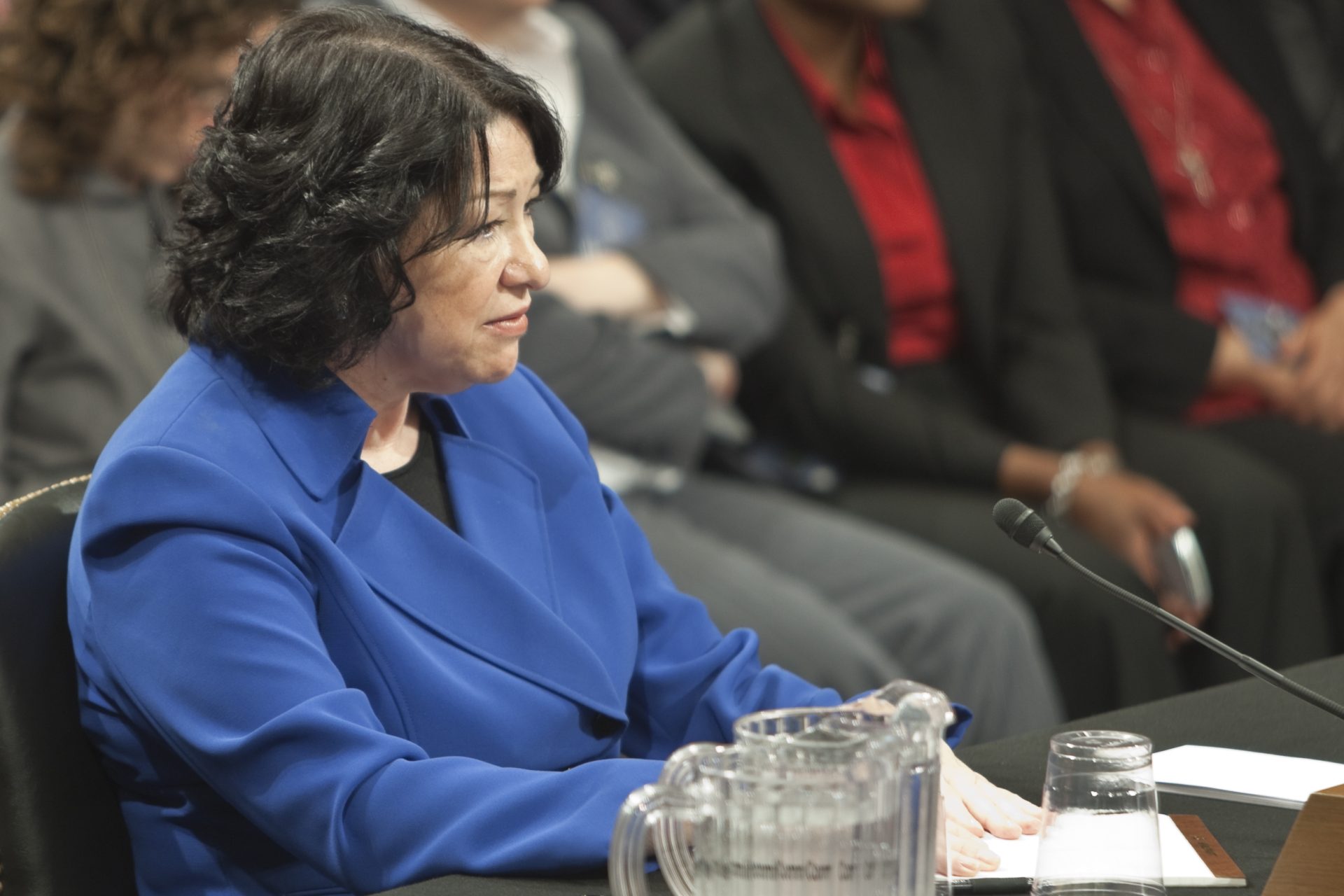
SCOTUS Can’t Stop a Tyrant—Justice WARNS!
Justice Sonia Sotomayor’s pointed gun confiscation hypothetical in a Supreme Court hearing raised urgent questions about the judiciary’s limits in halting potential constitutional overreach.
At a Glance
Justice Sotomayor imagined a president ordering the mass confiscation of firearms
The scenario was used to highlight judicial limits in enforcing constitutional rights
Historical parallels to American resistance against disarmament were invoked
The Court recently issued a new ethics code amid ongoing judicial gift scandals
Critics argue the code lacks enforcement mechanisms and public accountability
The Hypothetical Heard ‘Round the Courtroom
In a provocative moment during Supreme Court oral arguments on birthright citizenship, Justice Sonia Sotomayor posed a dramatic hypothetical: What if a newly elected president declared a national emergency and ordered military forces to seize all privately owned firearms? Her concern was not just theoretical—it was a challenge to the judiciary’s actual ability to stop such sweeping, unconstitutional overreach.
She questioned whether courts would be forced to wait for individual lawsuits rather than having the tools to intervene systemically. Her inquiry suggested an alarming impotence embedded within current judicial mechanisms. “We couldn’t stop that,” she said, referring to a total nationwide gun seizure. “We and the courts have to sit back and wait?”
Watch a report: Supreme Court debates government overreach limits.
Founders’ Intent and the Judiciary’s Reach
Sotomayor’s questions echo the revolutionary-era fears that birthed the Second Amendment. Drawing on historical revolts like the American and Texas uprisings, she spotlighted the constitutional function of an armed citizenry—not just as a cultural artifact, but as a last-line defense against tyranny.
The late Judge Alex Kozinski once wrote in Silviera v. Lockyer that the Second Amendment was not meant for hunting or sport, but for “resistance to tyranny.” Sotomayor, in evoking such language, may be underscoring a rarely voiced judicial concern: that some constitutional crises may simply lie beyond the court’s power to remedy in real time.
Ethics Under the Microscope
While Sotomayor presses for clarity on judicial limitations, the Court itself is facing mounting scrutiny over ethical conflicts involving undisclosed gifts. A spate of reports over the past year detailed lavish, previously unreported benefits given to several justices by private benefactors, prompting outrage from ethics watchdogs.
The Supreme Court released its first-ever formal ethics code in November 2023, but critics contend it lacks any real enforcement provisions. Without accountability, the judiciary risks eroding public trust even as it claims to be the last guardian of constitutional order.
Sotomayor’s hypothetical raises a double-edged dilemma: if the courts cannot act to stop egregious executive actions—and cannot police themselves—then who, truly, holds power in a constitutional crisis?
As the nation grapples with deepening institutional distrust and the rising specter of executive overreach, Sotomayor’s challenge is both a warning and a call: the constitutional guardrails are not self-reinforcing. Someone must decide whether they still matter.